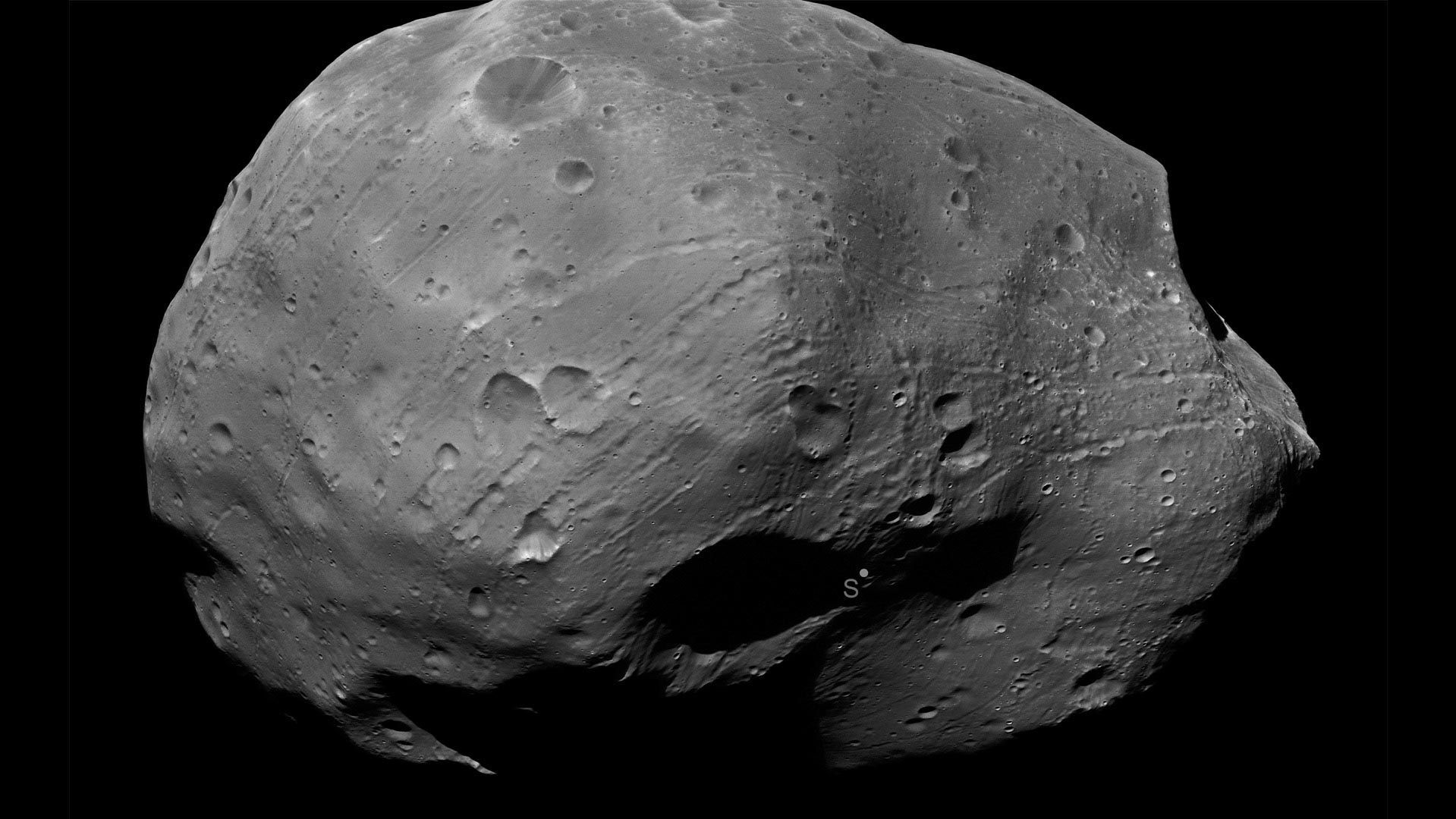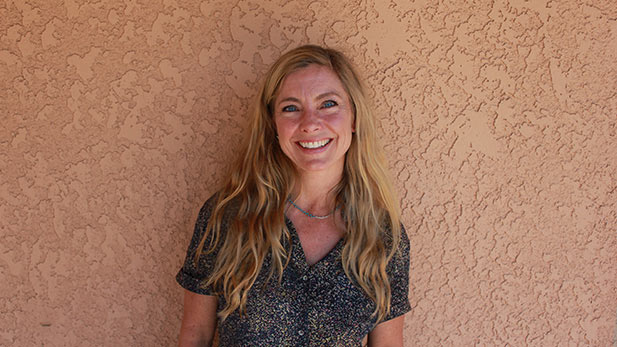 Phobos is a moon of Mars, a body that a team from the Planetary Science Institute could study in the name of future exploration. The "S" in the image indicates the south pole of the moon.
Phobos is a moon of Mars, a body that a team from the Planetary Science Institute could study in the name of future exploration. The "S" in the image indicates the south pole of the moon.
Researchers from the Tucson-based Planetary Science Institute are among four teams selected by NASA to explore scientific questions about the moon, near-Earth asteroids and the Martian moons, targets for future robotic and human exploration.
Senior scientist Amanda Hendrix leads the project to study the properties of fine-grained dust covering the surface of space bodies that have no atmosphere. She said the dust can hide elements on the surface that can be useful to explorers.
“When we go to these bodies we’re going to want to be able to find and utilize substances like oxygen and hydrogen for water. So we can either find and utilize water or make it in place there for fuel purposes and also oxygen for breathing and water for drinking,” she said.
 Amanda Hendrix of the Planetary Science Institute is a senior scientist on a project studying the dust on space bodies with the potential for future exploration.
Amanda Hendrix of the Planetary Science Institute is a senior scientist on a project studying the dust on space bodies with the potential for future exploration.The scientists will also use existing data to characterize the dust that could threaten surface operations once missions land on the bodies.
Hendrix’s team also will build and test a robotic rover with instruments that could be sent on a planetary mission. They'll also develop software to operate the rover, she said. The rover will be tested at sites in northern Arizona and Washington.
The project, Toolbox for Research and Exploration, or TREX, received $5.5 million from NASA for five years' work. Team members, including students, are in about a dozen states and work for the Planetary Science Institute, several NASA centers and at five U.S. universities, as well as organizations in Canada and Germany.


By submitting your comments, you hereby give AZPM the right to post your comments and potentially use them in any other form of media operated by this institution.